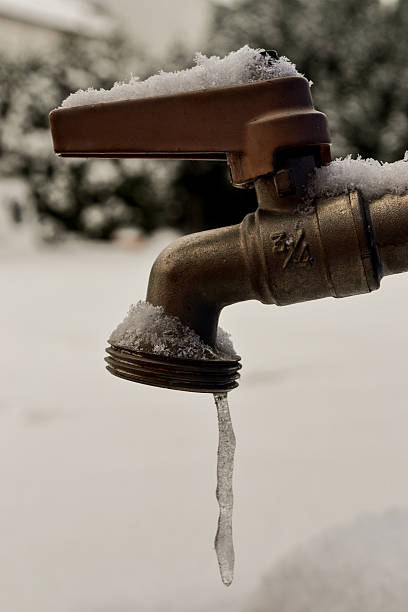Preventing Frozen Pipes in Cold Weather: Expert Strategies
Preventing Frozen Pipes in Cold Weather: Expert Strategies
Blog Article
Nearly everybody is bound to have their personal idea about 6 Ways to Prevent Frozen Pipes.

Winter can wreak havoc on your pipes, specifically by freezing pipes. Below's exactly how to prevent it from occurring and what to do if it does.
Introduction
As temperature levels decrease, the threat of frozen pipelines increases, possibly leading to pricey repairs and water damages. Comprehending just how to prevent icy pipelines is crucial for house owners in cool environments.
Prevention Tips
Insulating prone pipelines
Cover pipes in insulation sleeves or utilize warmth tape to protect them from freezing temperatures. Focus on pipes in unheated or outside locations of the home.
Home heating techniques
Keep indoor spaces effectively warmed, specifically locations with pipes. Open closet doors to enable cozy air to flow around pipes under sinks.
How to recognize icy pipelines
Seek lowered water circulation from taps, uncommon odors or noises from pipelines, and noticeable frost on subjected pipes.
Long-Term Solutions
Structural adjustments
Take into consideration rerouting pipelines away from exterior wall surfaces or unheated areas. Add added insulation to attic rooms, cellars, and crawl spaces.
Upgrading insulation
Buy top notch insulation for pipes, attic rooms, and walls. Proper insulation assists maintain regular temperatures and lowers the risk of icy pipelines.
Protecting Outside Pipes
Garden tubes and outdoor taps
Separate and drain yard tubes before winter months. Install frost-proof spigots or cover outdoor faucets with protected caps.
Recognizing Frozen Pipes
What triggers pipelines to ice up?
Pipelines freeze when subjected to temperature levels listed below 32 ° F (0 ° C) for expanded periods. As water inside the pipelines ices up, it increases, taxing the pipeline wall surfaces and possibly creating them to burst.
Risks and damages
Icy pipelines can lead to water system interruptions, building damages, and expensive repair services. Ruptured pipes can flood homes and create extensive structural damage.
Indications of Frozen Piping
Recognizing frozen pipes early can stop them from breaking.
What to Do If Your Pipelines Freeze
Immediate activities to take
If you believe icy pipelines, keep faucets open to ease pressure as the ice melts. Use a hairdryer or towels taken in hot water to thaw pipes slowly.
Conclusion
Preventing icy pipelines calls for proactive measures and quick reactions. By understanding the reasons, indications, and safety nets, house owners can protect their pipes during cold weather.
5 Ways to Prevent Frozen Pipes
Drain Outdoor Faucets and Disconnect Hoses
First, close the shut-off valve that controls the flow of water in the pipe to your outdoor faucet. Then, head outside to disconnect and drain your hose and open the outdoor faucet to allow the water to completely drain out of the line. Turn off the faucet when done. Finally, head back to the shut-off valve and drain the remaining water inside the pipe into a bucket or container. Additionally, if you have a home irrigation system, you should consider hiring an expert to clear the system of water each year.
Insulate Pipes
One of the best and most cost-effective methods for preventing frozen water pipes is to wrap your pipes with insulation. This is especially important for areas in your home that aren’t exposed to heat, such as an attic. We suggest using foam sleeves, which can typically be found at your local hardware store.
Keep Heat Running at 65
Your pipes are located inside your walls, and the temperature there is much colder than the rest of the house. To prevent your pipes from freezing, The Insurance Information Institute suggests that you keep your home heated to at least 65 degrees, even when traveling. You may want to invest in smart devices that can keep an eye on the temperature in your home while you’re away.
Leave Water Dripping
Moving water — even a small trickle — can prevent ice from forming inside your pipes. When freezing temps are imminent, start a drip of water from all faucets that serve exposed pipes. Leaving a few faucets running will also help relieve pressure inside the pipes and help prevent a rupture if the water inside freezes.
Open Cupboard Doors
Warm your kitchen and bathroom pipes by opening cupboards and vanities. You should also leave your interior doors ajar to help warm air circulate evenly throughout your home.

We are very interested in 6 Ways to Prevent Frozen Pipes and I really hope you appreciated my page. Enjoyed our content? Please quickly share it. Help someone else locate it. Thanks for your time. Come back soon.
Request Free Estimate Report this page